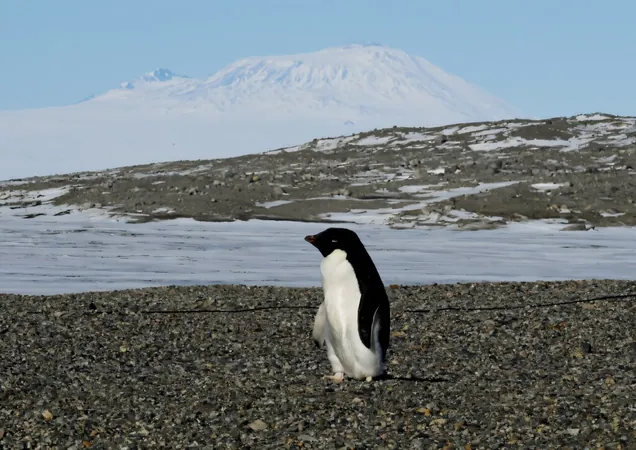
How Penguin Poop Could Help Save Antarctica from Climate Change!
2025-05-25
Author: Sarah
As Antarctica faces the alarming effects of climate change, a surprising ally emerges in the battle against rising temperatures: penguin poop! A groundbreaking study published in *Communications Earth & Environment* reveals that ammonia emitted from penguin guano may actually contribute to cloud formation, shielding the continent from harsh sunlight.
The Power of Penguin Poo
Lead researcher Matthew Boyer, an atmospheric scientist at the University of Helsinki, points out that while laboratory experiments have long indicated the potential of gaseous ammonia to form clouds, quantifying this effect in the wild has never been done—until now.
Antarctica: The Perfect Natural Laboratory
Blessed by a lack of human pollution, Antarctica serves as an ideal environment for studying the effects of penguin colonies, which serve as significant ammonia sources. With minimal vegetation, these colonies play a vital ecological role, particularly as vanilla wcagainst climate change.
Threatened Birds and Their Role
However, the future of these waddling wonders hangs in the balance. Climate change-induced sea ice loss disrupts their nesting and feeding habits, making it even more urgent to understand penguins' broader environmental impact.
The Science Behind the Clouds
When penguins release their droppings—a potent mix of feces and urine—it emits ammonia into the atmosphere. This gas interacts with sulfur from ocean phytoplankton, leading to the creation of tiny aerosol particles essential for cloud formation. To investigate this phenomenon, Boyer and his team conducted a summer study at Argentina's Marambio Base, strategically placed near a 60,000-strong Adelie penguin colony.
A Surprising Discovery
Their findings were astonishing! As winds carried air from the thriving penguin colony, ammonia levels skyrocketed to an extraordinary 13.5 parts per billion—far above the normal background levels. Even weeks after the penguins migrated, residual ammonia levels remained significantly elevated, thanks to the guano-soaked ground acting as a slow-releasing fertilizer.
Clouds and Climate Connections
Boyer describes this process as a "synergistic relationship" between penguins and phytoplankton, dramatically amplifying the production of aerosols in the region. The research suggests that the decline of penguin populations could lead to a warming feedback loop in Antarctica's summer atmosphere—though this remains a hypothesis at present.
Implications for the Future
While clouds generally help cool the Earth by reflecting sunlight, the presence of ice sheets could complicate matters. Extra cloud coverage over snowy surfaces might trap heat instead of reflecting it back into space. This delicate balance underscores the intricate links between ecosystems and atmospheric dynamics, illustrating why preserving biodiversity is crucial.
A Call for Conservation
As Boyer aptly puts it, our findings highlight the essential connection between living organisms and atmospheric processes, prompting a renewed focus on conservation and biodiversity. From ancient microbial activities that oxygenated the atmosphere to the modern-day influence of penguins on cloud cover, safeguarding these natural systems is vital for our planet’s health.

 Brasil (PT)
Brasil (PT)
 Canada (EN)
Canada (EN)
 Chile (ES)
Chile (ES)
 Česko (CS)
Česko (CS)
 대한민국 (KO)
대한민국 (KO)
 España (ES)
España (ES)
 France (FR)
France (FR)
 Hong Kong (EN)
Hong Kong (EN)
 Italia (IT)
Italia (IT)
 日本 (JA)
日本 (JA)
 Magyarország (HU)
Magyarország (HU)
 Norge (NO)
Norge (NO)
 Polska (PL)
Polska (PL)
 Schweiz (DE)
Schweiz (DE)
 Singapore (EN)
Singapore (EN)
 Sverige (SV)
Sverige (SV)
 Suomi (FI)
Suomi (FI)
 Türkiye (TR)
Türkiye (TR)
 الإمارات العربية المتحدة (AR)
الإمارات العربية المتحدة (AR)